
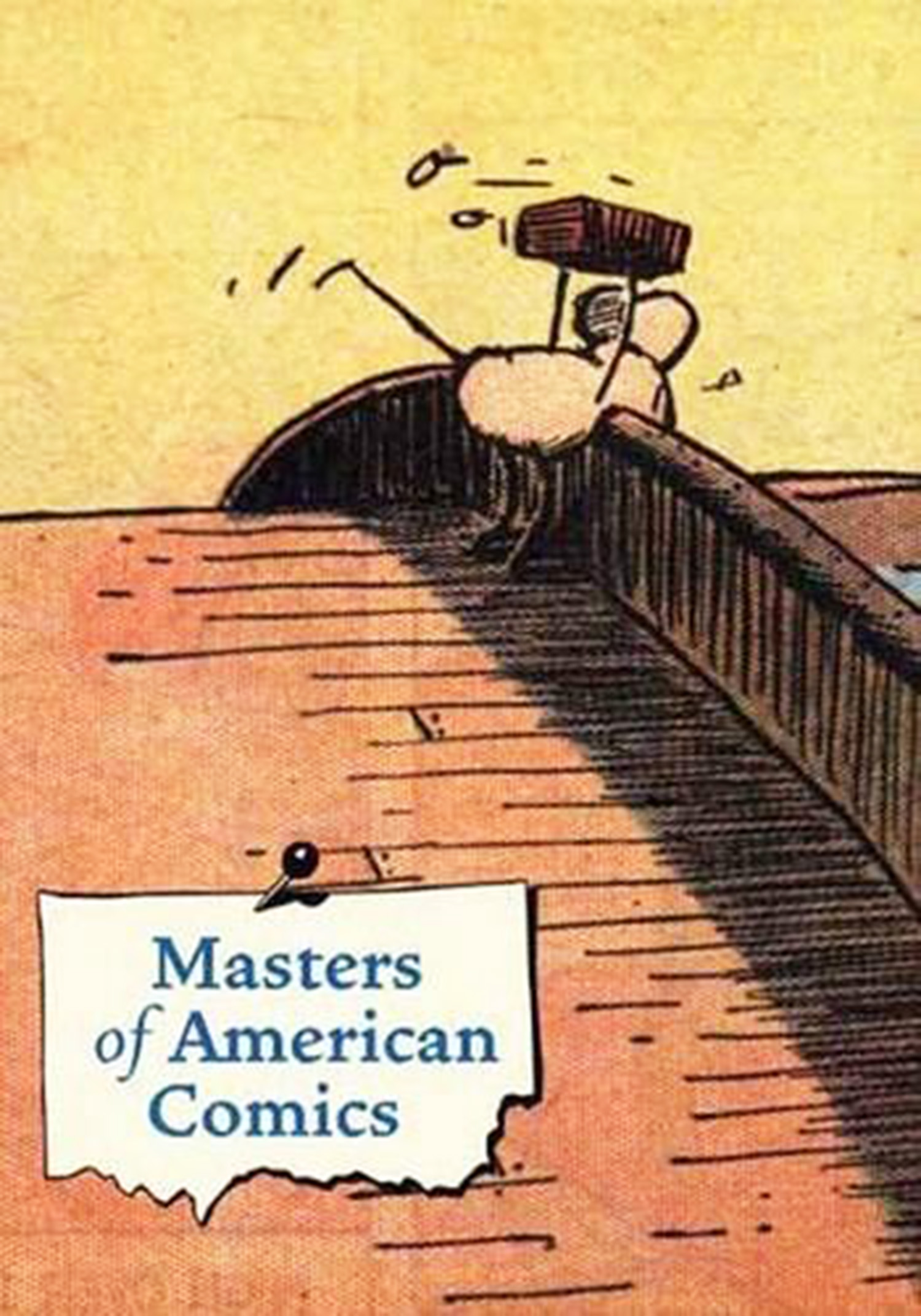
The groundbreaking Master of American Comics exhibition is a survey of a century of American comic art, establishing a canon for the popular art form from the perspective of American fine art museums for the very first time.
The joint exhibition featured over 900 works by more than a dozen artists on view at two separate venues: the Hammer Museum in Westwood and MOCA in Downtown Los Angeles. The environment focused on creating a unified identity for both venues while responding to the differences in context and content.

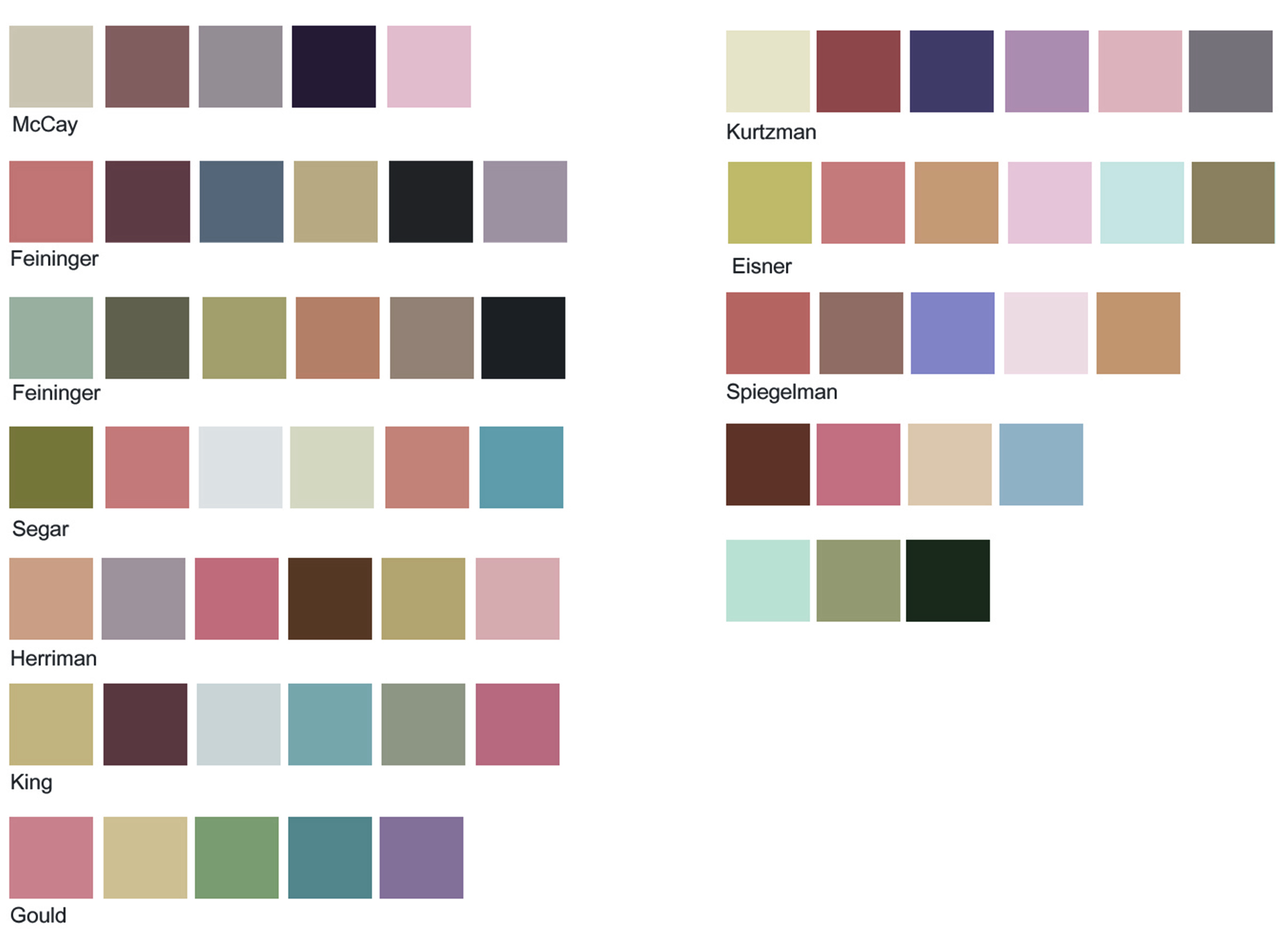
The exhibit design honored the humble art form and its medium (the household newspaper) by taking a sustainable, equally humble approach and striking a balance between the formality of the museum presentation and the casual nature and accessibility of the art form.
The economical design solution utilized a studied application of only two elements: masonite-faced hollow core doors transformed into display cases, walls and furniture — and fields of colors interpreted from the artworks applied as paint or vinyl floor stickers.
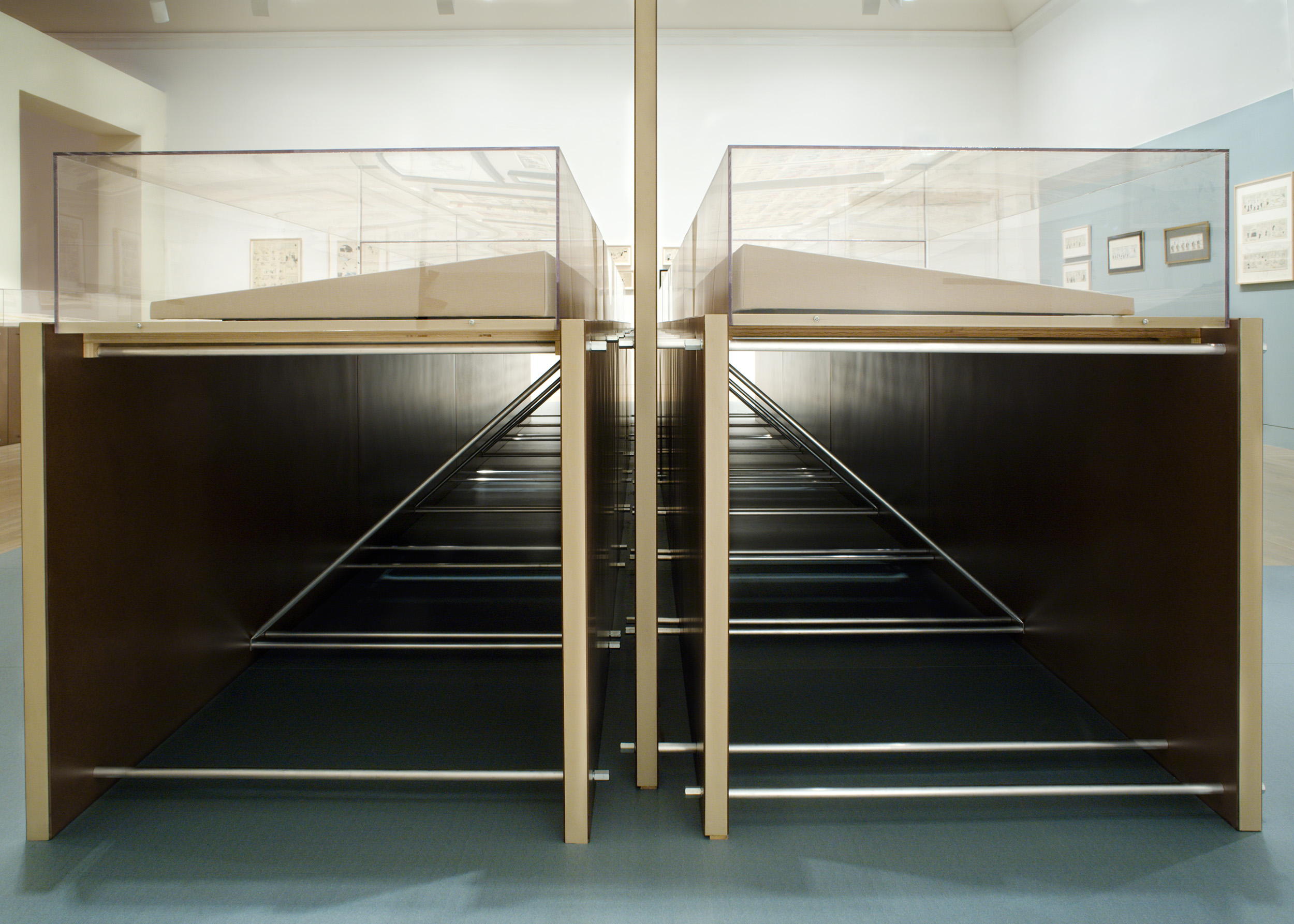
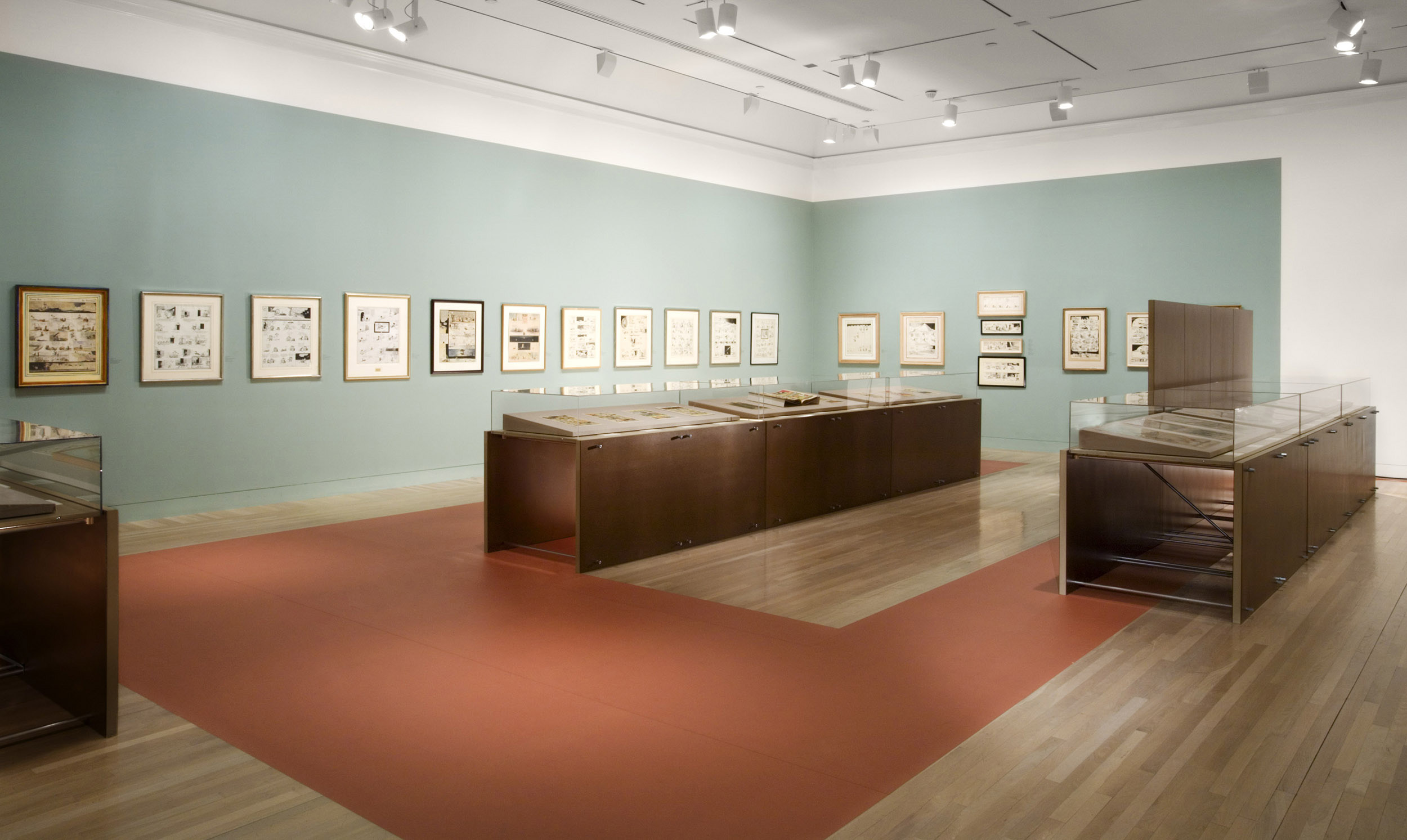
The design narrative traces a chronological array of comic work, and parallels the evolution of the exhibit design with that of spatial typologies during the same period.
Beginning at the Hammer Museum — showcasing comics from the first half of the 20th century — after entering The Parlor, a threshold space intended to recondition the eyes, the museumgoer moves from room to room through decades of comic art.
The color fields begin to render relationships between spatial elements such as walls and floors, conveying an increasing sense of freedom from the raumplan through the open plan. Simultaneously, the display furniture becomes space makers, functioning as walls and plinths.
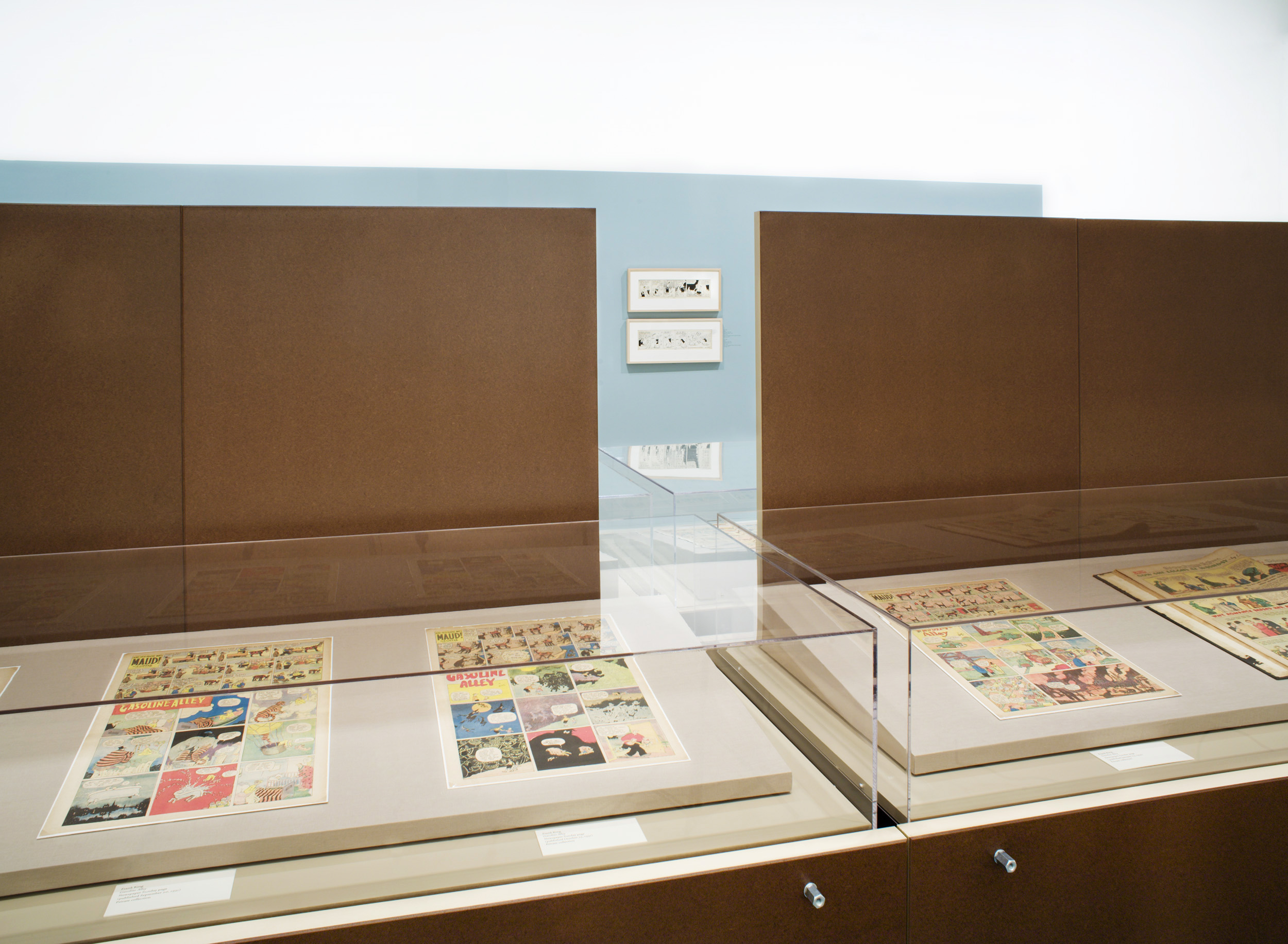
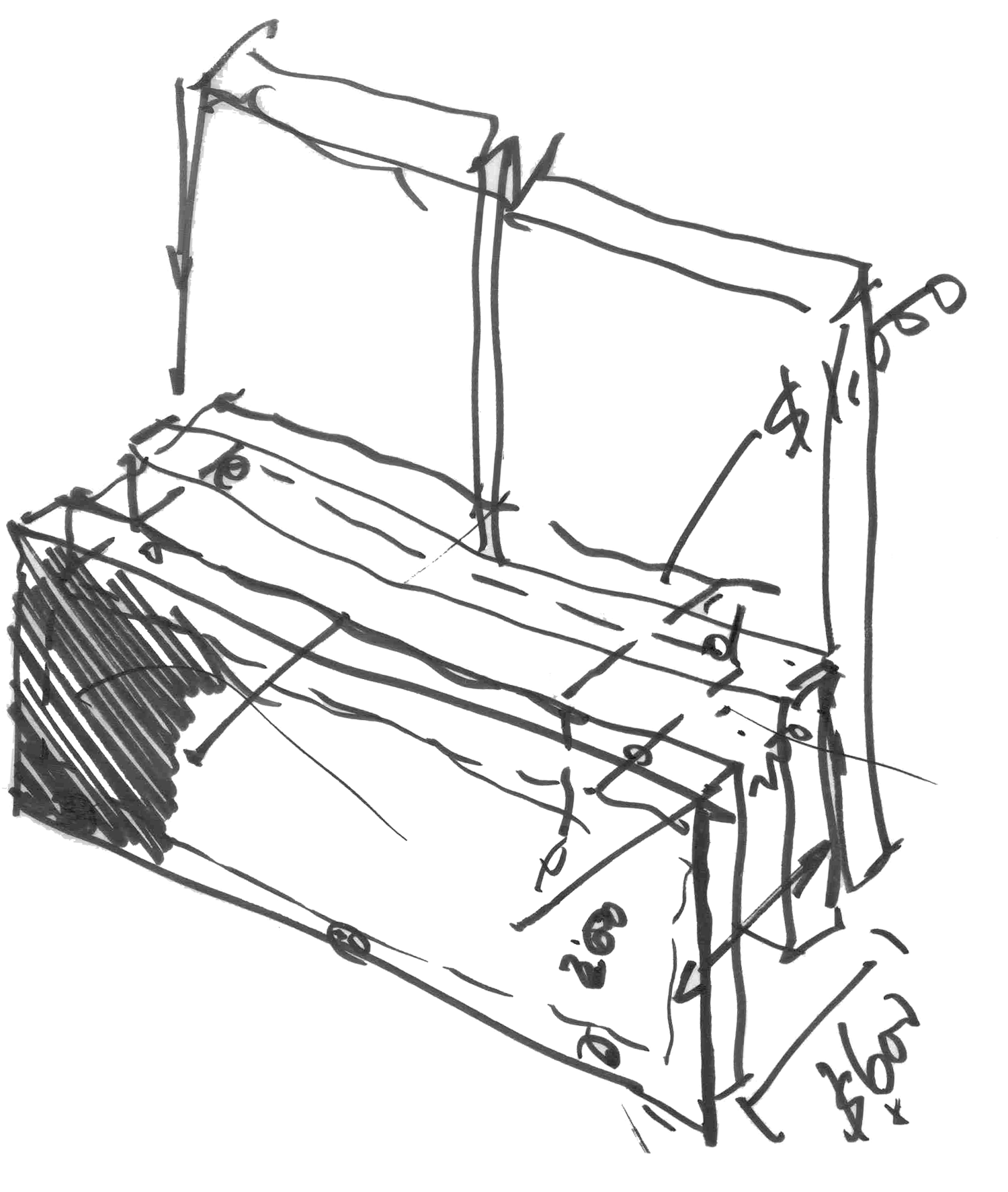


Due to the length of time required to view the materials of the show, there is an intermission: where an entire room is rendered in a very domestically oriented color palette, occupied by one long communal library table made of doors with reading materials for the entire show, a corner couch, and a moving image display of essential vignettes of the various artworks.
This unexpected experiential punctuation, an exuberantly pink reading room, is intended to recharge the museumgoer after long periods of reading in a standing position.
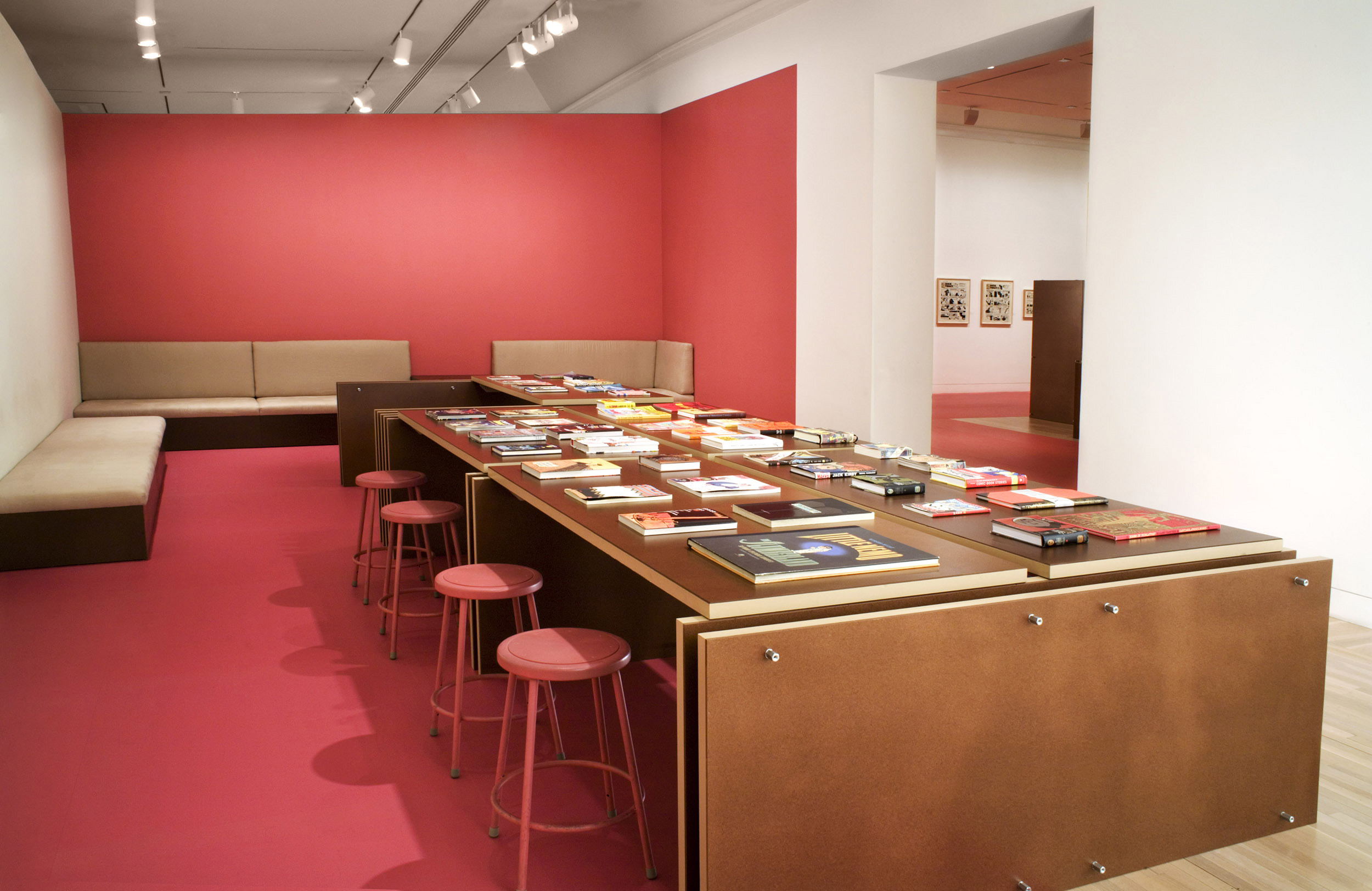

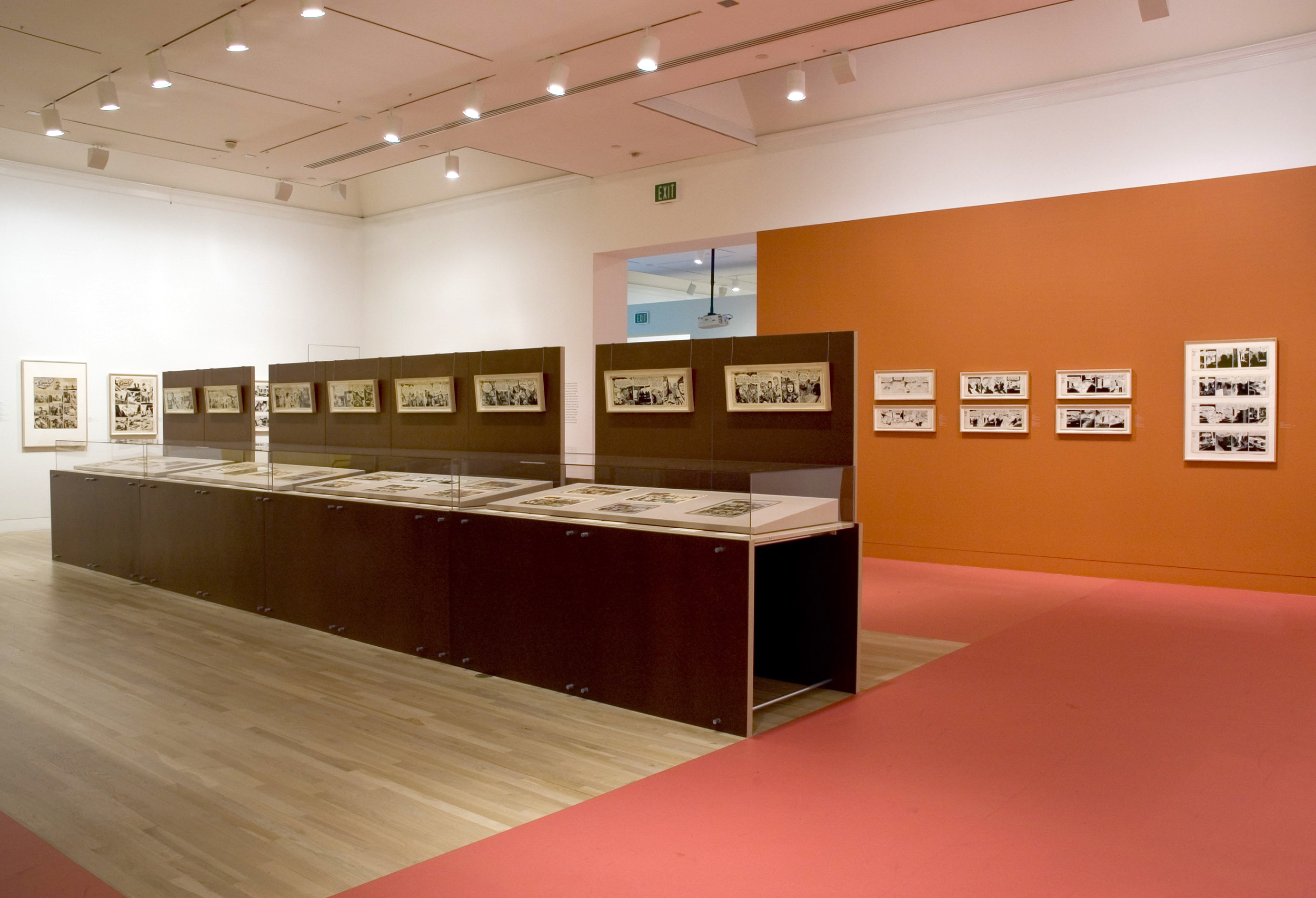
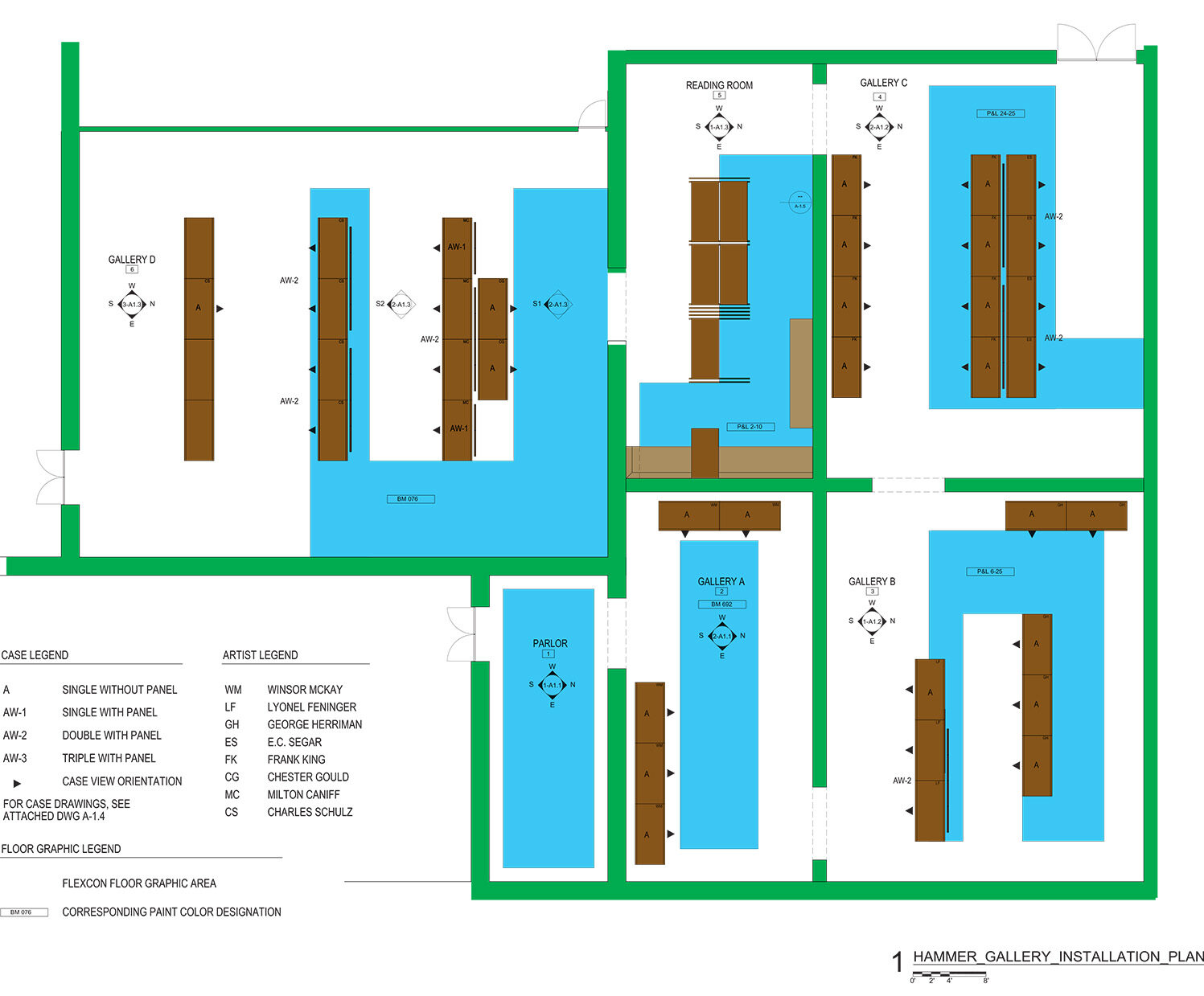
The spatial narrative and evolving palette continues until the final gallery, which displayed Charles Schultz’s works. The simple quality of the lines in the artwork inspired the space to be rendered in a color field of one floating, folded wall plane, riffing on the dematerialization of walls in mid-century architecture.
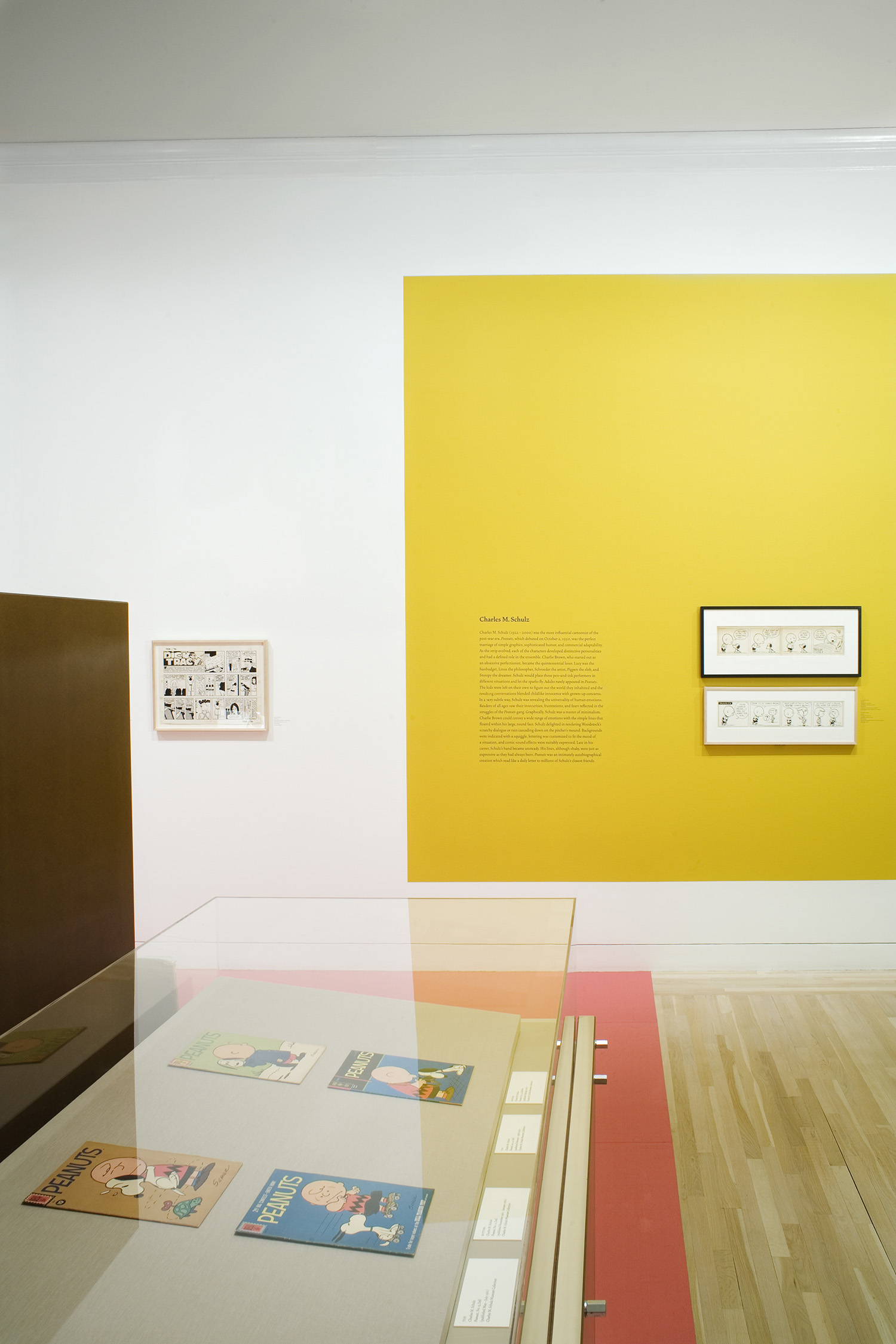
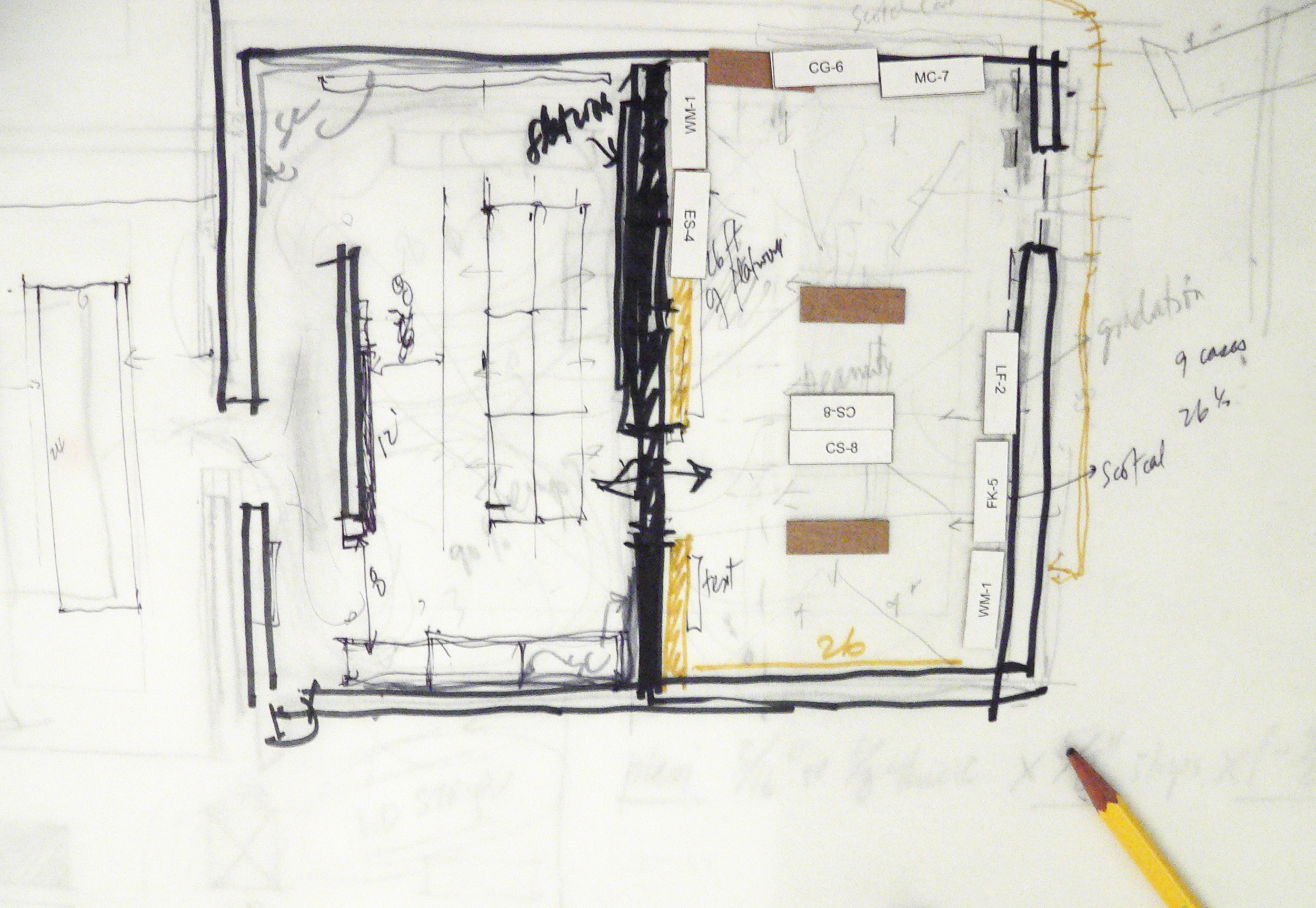

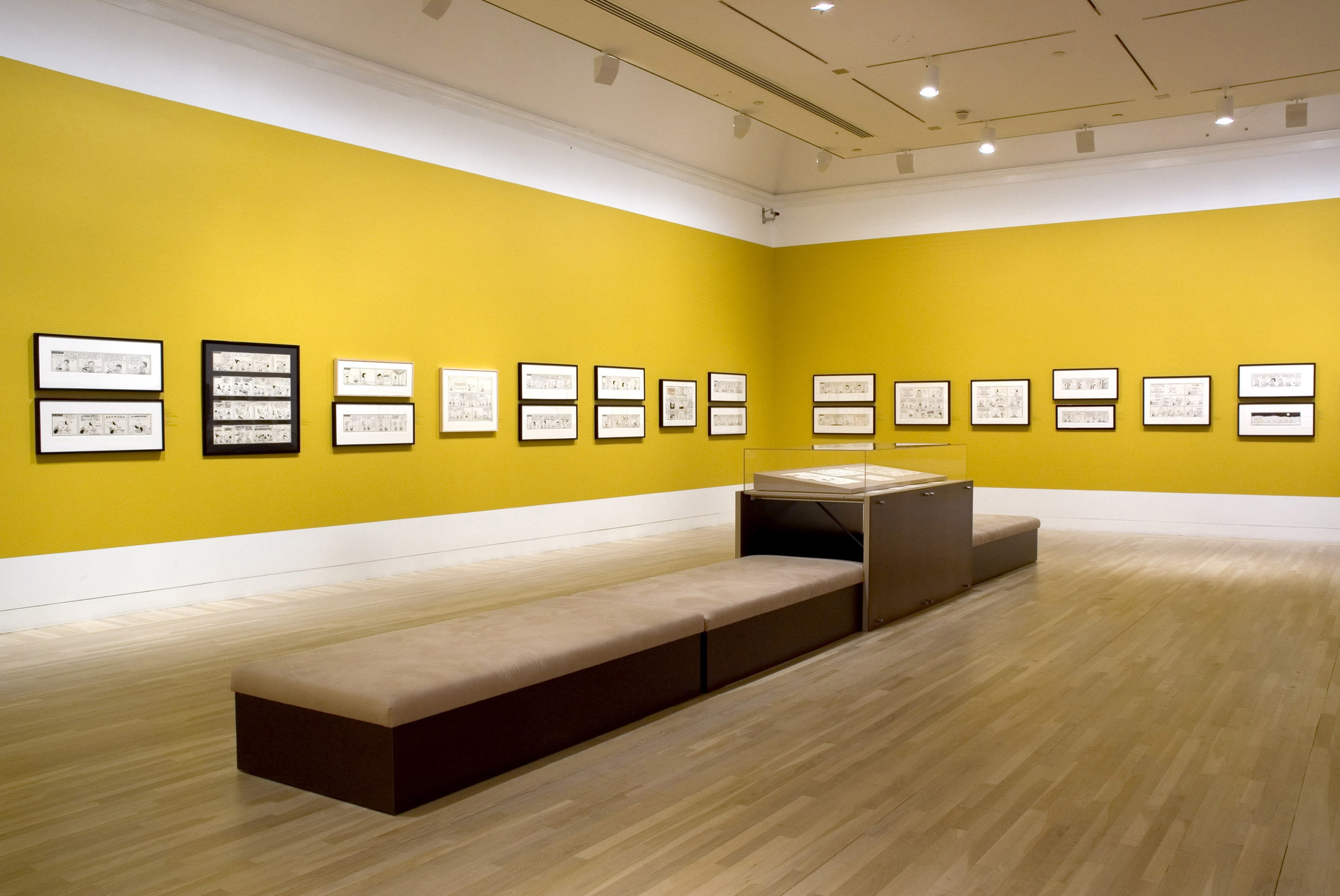
At MOCA — representing the second half of the century — due to the varying spatial configurations, ceiling heights, and characteristics of the multiple galleries at the venue, the design applied a new structure of the field over the disparate spaces.

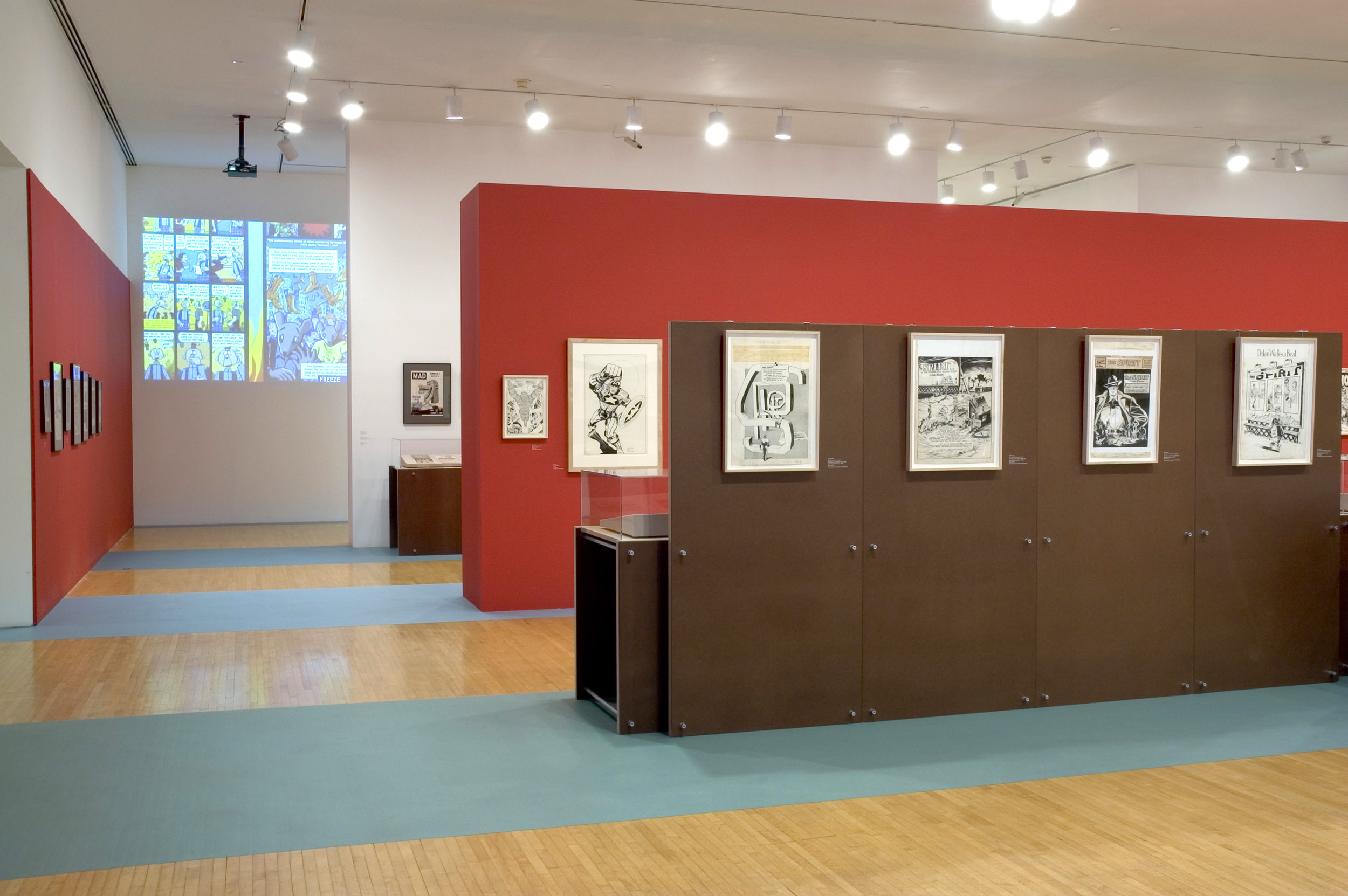
Stripes of three gradated colors found in the works were used to provide continuity and unified identity for the exhibition in different rooms. Selected vertical color elements were used to provide the large-scale orientation, and the display fixtures fulfilled space-defining roles.


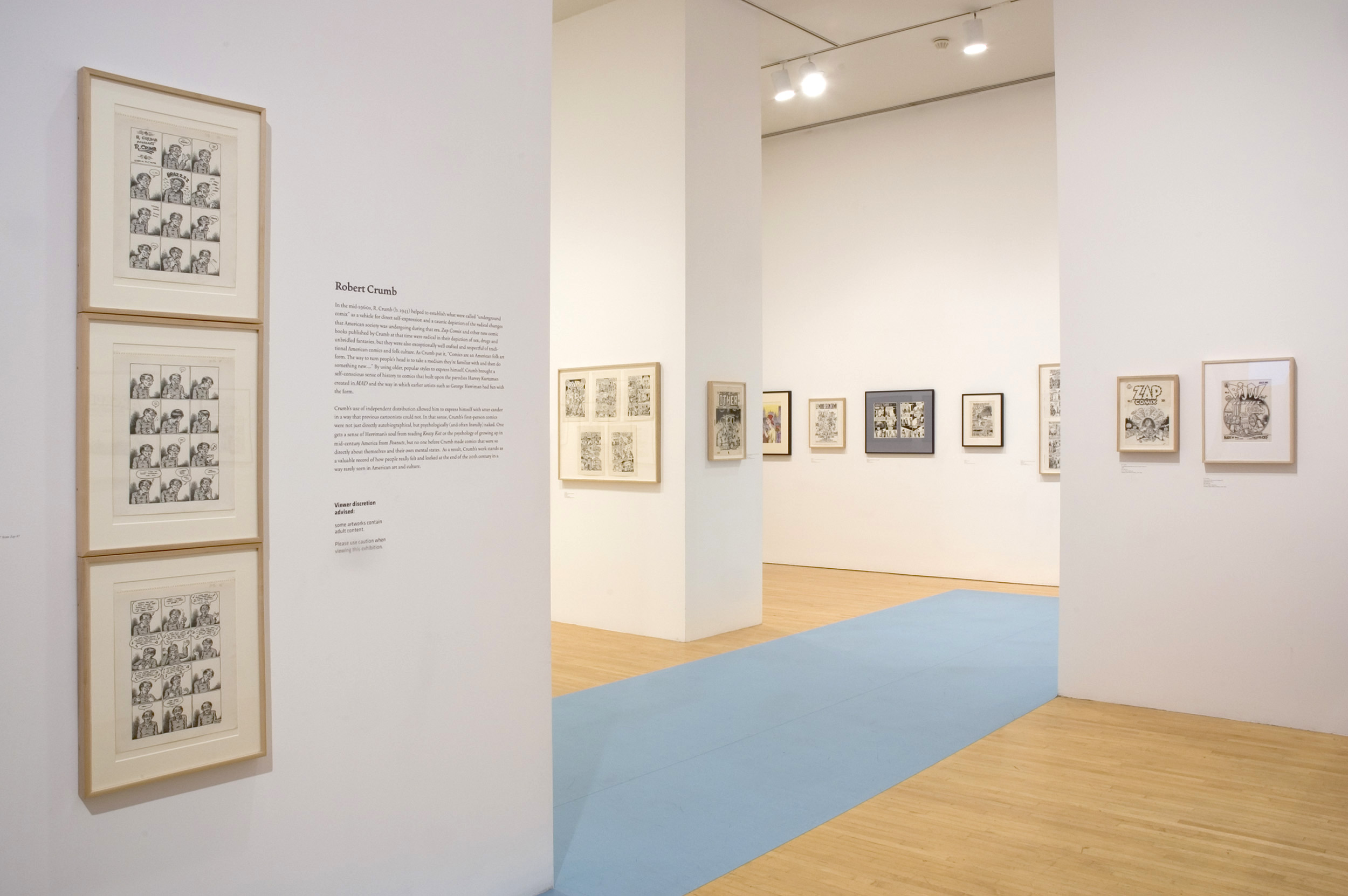
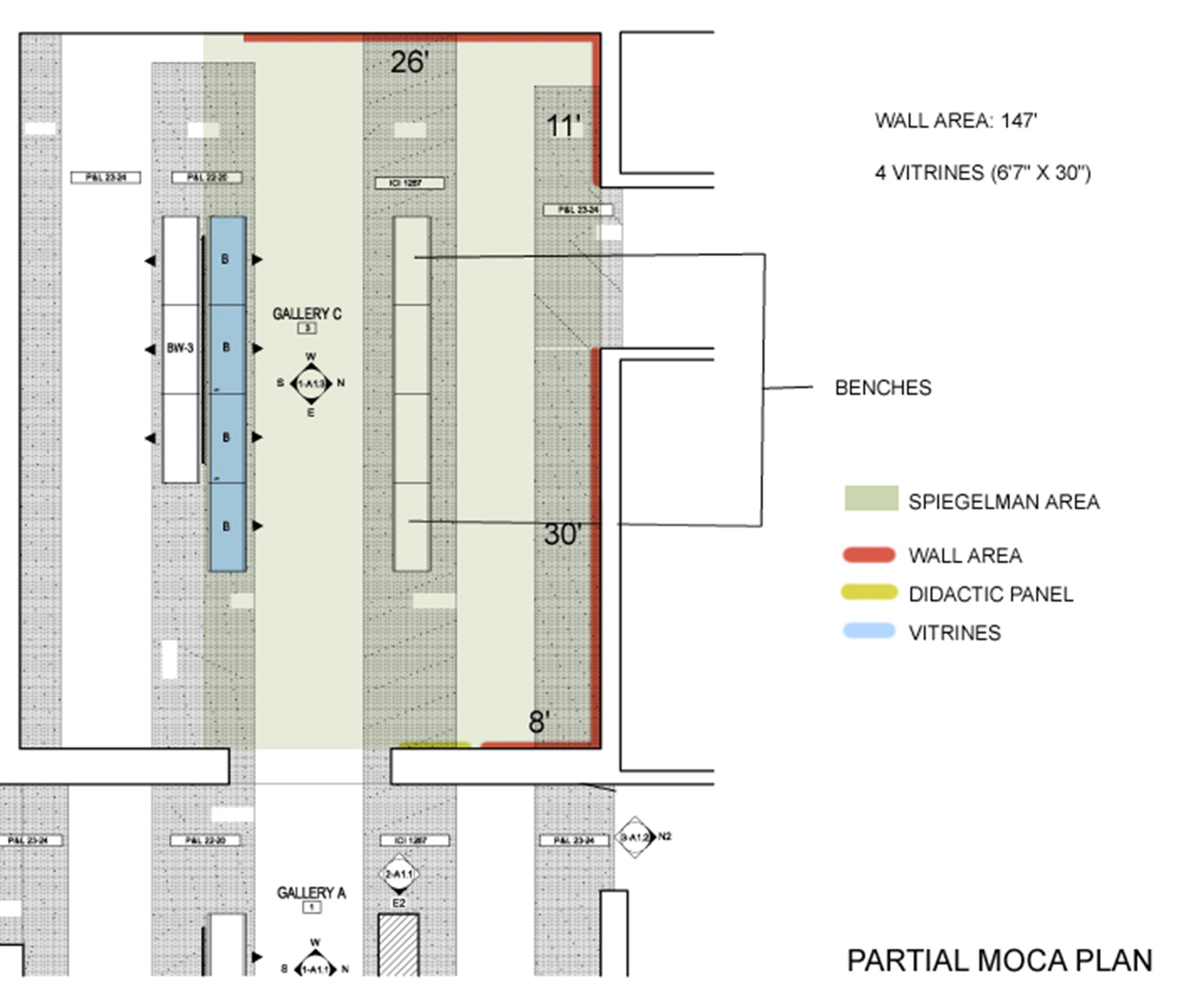
As part of the design strategy, Chu ¬ Gooding established an easily transportable identity system and set of cases and fixtures that could travel to different venues around the country.
Once the exhibition was completed, the hollow core doors were donated to Habitat for Humanity for use in actual housing projects – just as the Sunday comics are repurposed at the bottom of a bird cage or tossed into the recycling bin to be given a second life.
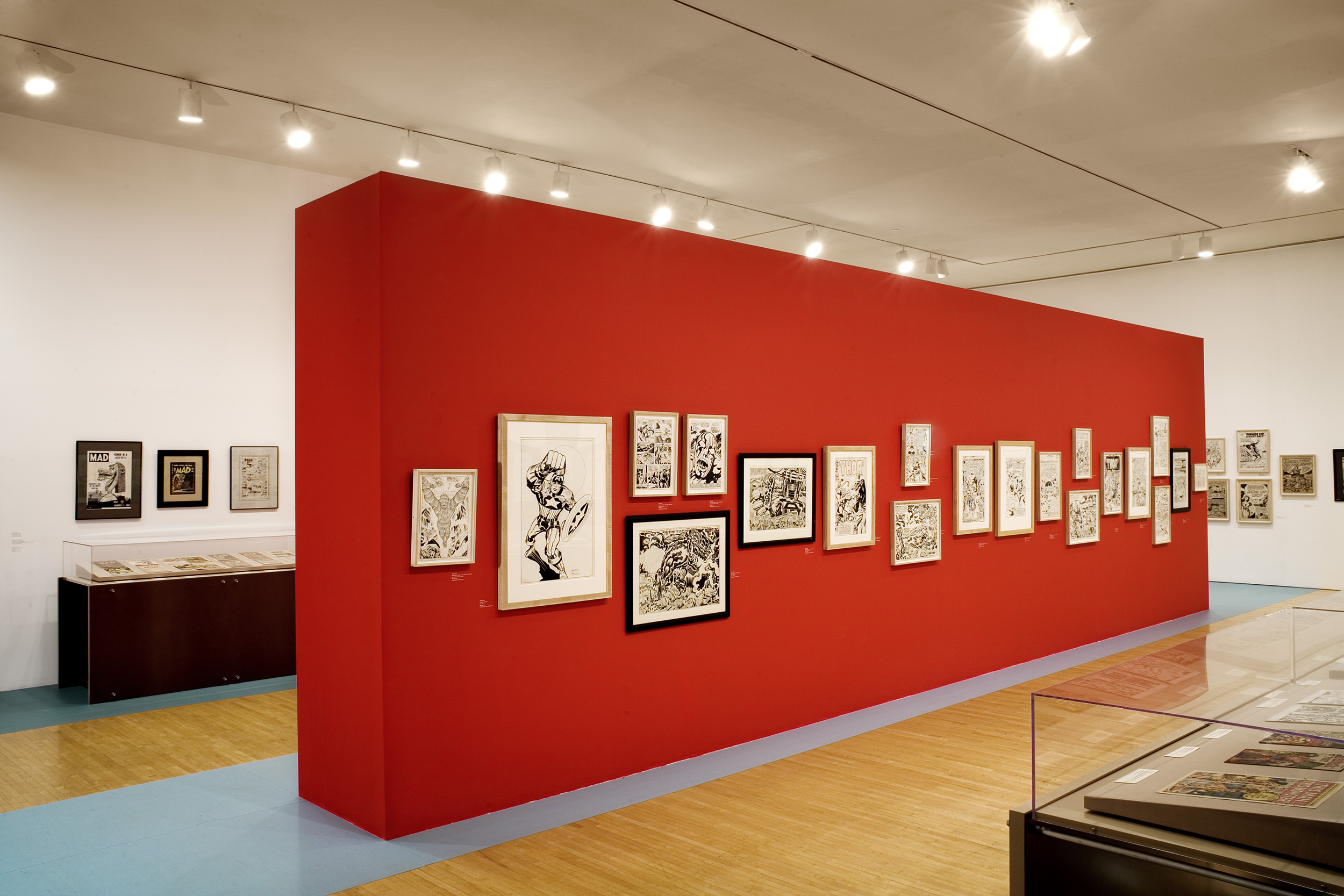
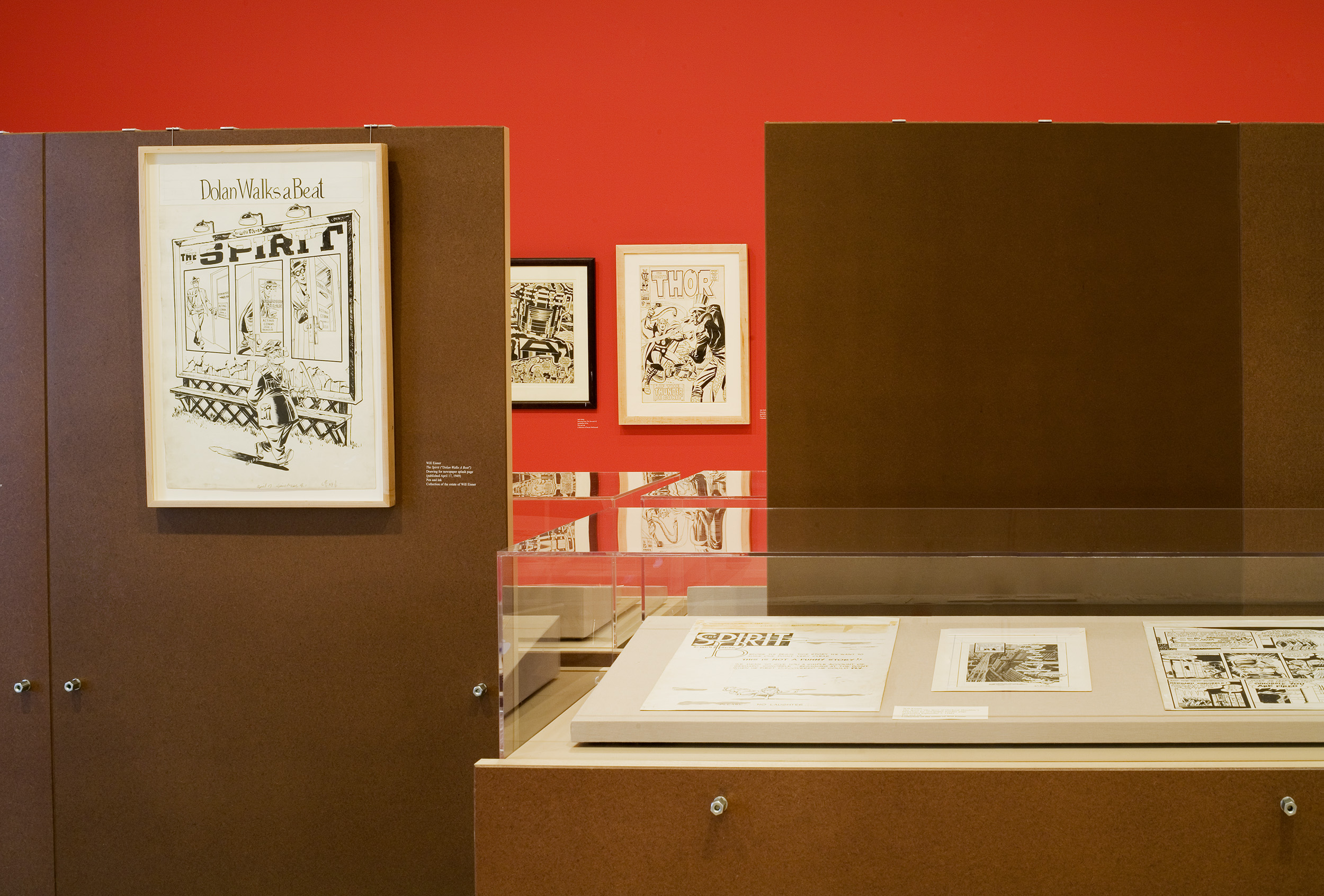
Featured comic artists include Winsor McCay, Lyonel Feininger, George Herriman, E.C. Segar, Frank King, Chester Gould, Milton Caniff, and Charles M. Schulz at the Hammer Museum, and Will Eisner, Jack Kirby, Harvey Kurtzman, R. Crumb, Art Spiegelman, Gary Panter, and Chris Ware at MOCA.